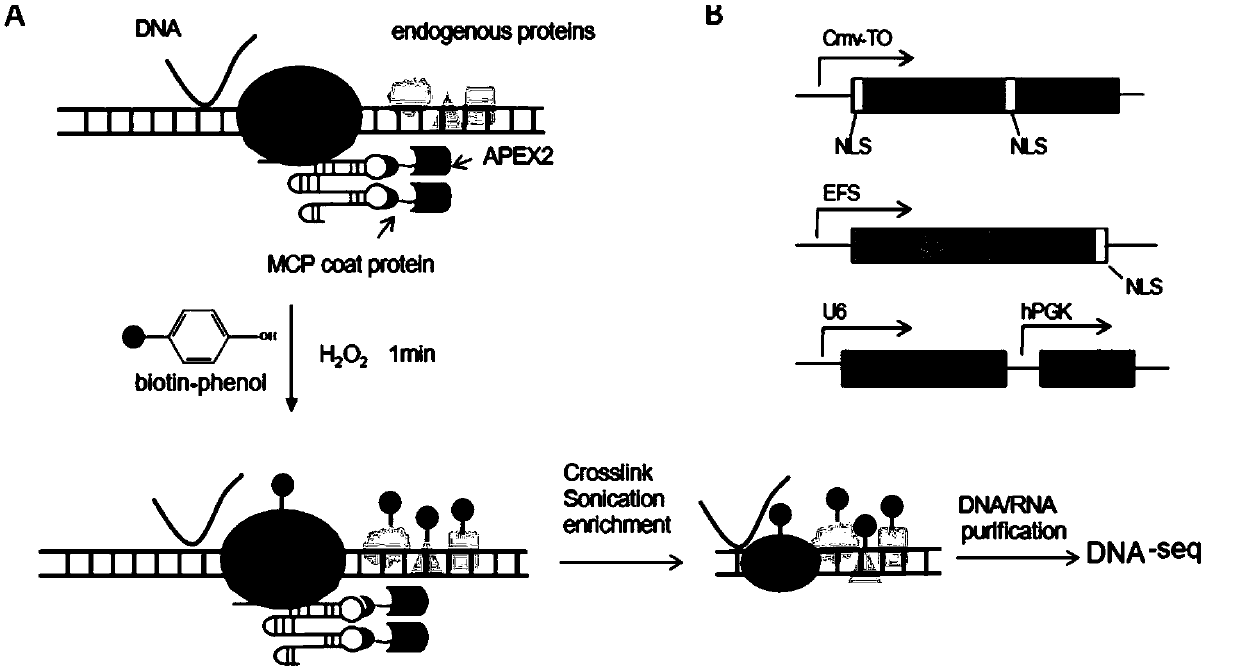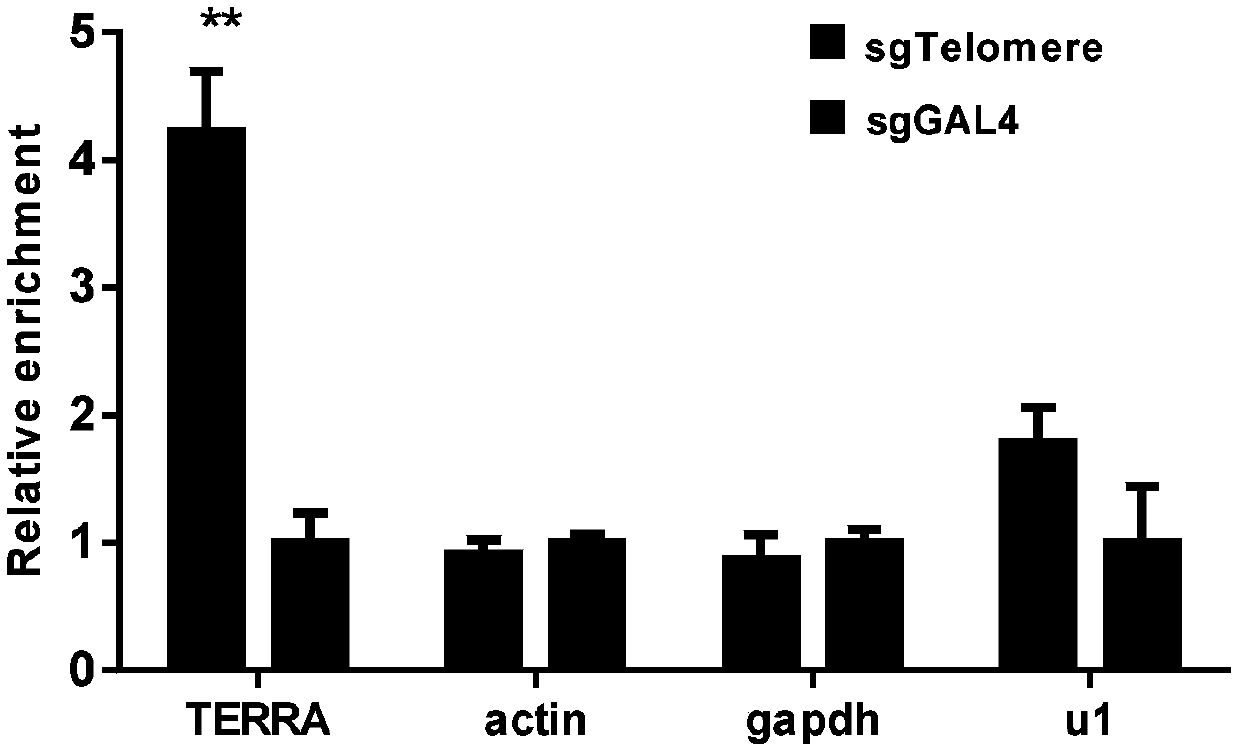Method for identifying specific site interaction RNA based on CRISPR/cas9 and APEX2 system
A technology for identifying specificity and loci, which can be applied in the biological field and can solve problems such as the inability to provide natural chromatin or genome-wide functional analysis.
- Summary
- Abstract
- Description
- Claims
- Application Information
AI Technical Summary
Problems solved by technology
Method used
Image
Examples
Embodiment 1
[0030] Construction and transfection of embodiment 1 plasmid expression vector
[0031] 1.1 Construction of the plasmid expression vector: In order to construct the MS2-APEX2_NLS fusion protein expression vector, APEX2 was amplified from the pcDNA3Connexin43-GFP-APEX2 (Addgene plasmid: 49385) plasmid by PCR, and then digested with BamHI and XhoI, Cloned into the pHAGE-EFS-MCP-3XBFPnls (Addgene plasmid: 75384) vector. The pLH-sgRNA1-2XMS2 (Addgene plasmid: 75389) plasmid was digested with BbsI and ligated with the annealed oligonucleotide fragment to obtain a plasmid expressing sgRNA. The plasmid expressing dCas9 was obtained from Addgene:64107. The sgRNA sequence is shown in Table 1:
[0032] Table 1 sgRNA sequence
[0033] target Sequence(5'-3') sgRNA-Telomere TAGGGTTAGGGTTAGGGTTA (SEQ ID NO 1) sgRNA-Gal4 AACGACTAGTTAGGCGTGTA (SEQ ID NO2)
[0034] 1.2 HEK293T cell culture: HEK293T cells were cultured in a 5% CO2 and 37°C incubator, and the me...
Embodiment 2
[0036] Example 2 Enrichment and detection of telomeric region RNA
[0037] 2.1 After the cells were transfected for 24 hours, the cells were treated with 500 uM biotin-phenol (Iris Biotech GmbH, Germany) in an incubator for 30 min, then hydrogen peroxide was added to a final concentration of 1 mM, and the cells were treated at room temperature for 1 min. Immediately thereafter, reaction termination solution (10 mM sodium azide, 10 mM Vc, 5 mM Trolox) was added to terminate the reaction, and washed three times. After terminating the reaction, fix with 0.2% formaldehyde for 10 minutes, and terminate the reaction with glycine.
[0038]2.2 Add 1x PIC, 100U / ml RNasin, 5mM EDTA, 0.5mM DTT to the buffers used below. Lyse the cells with 1 mL of Hypotonic buffer (20mM HEPES pH7.5, 10mM potassium chloride, 1mM EDTA, 0.1mM activated sodium orthosclerate, 0.2% NP-40, 10% glycerol) for 15min, centrifuge at 13000g for 1min at 4°C, Discard the supernatant. The cell pellet was resuspended ...
PUM
 Login to View More
Login to View More Abstract
Description
Claims
Application Information
 Login to View More
Login to View More - R&D
- Intellectual Property
- Life Sciences
- Materials
- Tech Scout
- Unparalleled Data Quality
- Higher Quality Content
- 60% Fewer Hallucinations
Browse by: Latest US Patents, China's latest patents, Technical Efficacy Thesaurus, Application Domain, Technology Topic, Popular Technical Reports.
© 2025 PatSnap. All rights reserved.Legal|Privacy policy|Modern Slavery Act Transparency Statement|Sitemap|About US| Contact US: help@patsnap.com


